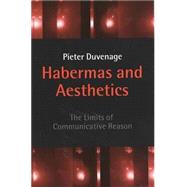
| Preface | vii | ||||
| Acknowledgements | ix | ||||
| Introduction | 1 | (7) | |||
| 1 Habermas and Aesthetics: The First Phase | 8 | (22) | |||
|
9 | (2) | |||
|
11 | (4) | |||
|
15 | (3) | |||
|
18 | (4) | |||
|
22 | (5) | |||
|
27 | (3) | |||
| 2 Habermas and the Legacy of Aesthetics in Critical Theory | 30 | (21) | |||
|
31 | (5) | |||
|
36 | (4) | |||
|
40 | (5) | |||
|
45 | (4) | |||
|
49 | (2) | |||
| 3 Habermas and Aesthetics: The Second Phase | 51 | (24) | |||
|
52 | (3) | |||
|
55 | (3) | |||
|
58 | (8) | |||
|
66 | (6) | |||
|
72 | (3) | |||
| 4 The Second Phase Continues: The Postmodern Challenge | 75 | (21) | |||
|
76 | (3) | |||
|
79 | (2) | |||
|
81 | (5) | |||
|
86 | (3) | |||
|
89 | (4) | |||
|
93 | (3) | |||
| 5 Critical Perspectives on Habermas's Aesthetics | 96 | (24) | |||
|
97 | (3) | |||
|
100 | (4) | |||
|
104 | (7) | |||
|
111 | (6) | |||
|
117 | (3) | |||
| 6 The Reciprocity of World Disclosure and Discursive Language | 120 | (22) | |||
|
121 | (6) | |||
|
127 | (6) | |||
|
133 | (4) | |||
|
137 | (5) | |||
| Notes | 142 | (39) | |||
| Bibliography | 181 | (18) | |||
| Index | 199 |
The New copy of this book will include any supplemental materials advertised. Please check the title of the book to determine if it should include any access cards, study guides, lab manuals, CDs, etc.
The Used, Rental and eBook copies of this book are not guaranteed to include any supplemental materials. Typically, only the book itself is included. This is true even if the title states it includes any access cards, study guides, lab manuals, CDs, etc.